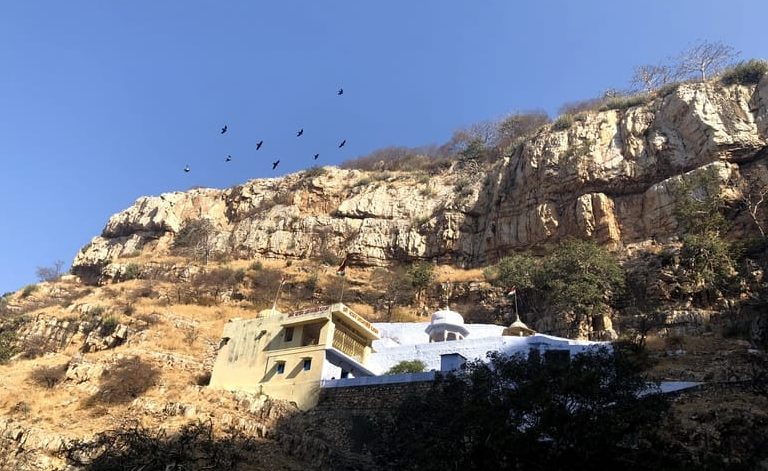India is a land where spirituality, culture, and history are beautifully intertwined. Among the many sacred places that dot its landscape, the Ambareshwar Mahadev Temple in Rajasthan holds a special place. Situated in the Rajsamand district of Rajasthan, this temple is dedicated to Lord Shiva, one of the most revered deities in Hinduism. Known for its unique charm, divine atmosphere, and rich historical significance, the temple draws pilgrims, tourists, and spiritual seekers throughout the year.
The Ambareshwar Mahadev Temple is not only a place of worship but also a cultural treasure. Its setting in the rugged yet enchanting landscape of Rajasthan adds to its aura, making it both a spiritual haven and an architectural gem. This long-form guide will walk you through the temple’s history, religious significance, architectural features, spiritual atmosphere, cultural context, festivals, and practical information for travelers who wish to explore its sacred grounds.
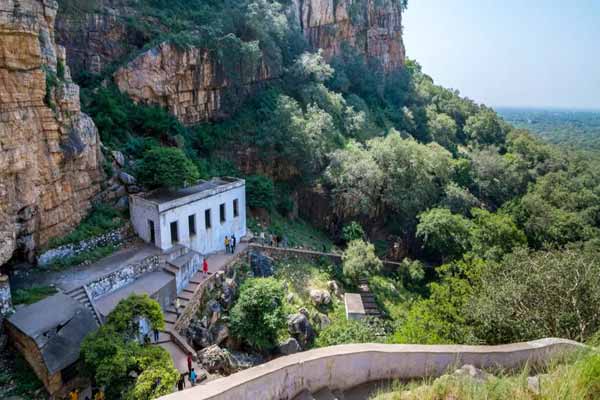
Historical Background of Ambareshwar Mahadev Temple
The history of the Ambareshwar Mahadev Temple goes back several centuries. Rajasthan, known for its Rajput heritage, has always been a land where valor and devotion coexisted. The rulers of the region were not only known for their bravery but also for their patronage of religion and architecture.
The temple is believed to have been built under royal patronage, though the exact date of its origin is debated among scholars. Many locals believe that the temple was constructed during the medieval period when temple building was flourishing across Rajasthan. Over the centuries, Ambareshwar Mahadev Temple has become a sacred site for devotees of Lord Shiva and continues to embody the deep-rooted spiritual traditions of the region.
Legends also surround the temple. According to local folklore, Lord Shiva himself is believed to have appeared here, blessing the land and its people. These stories, passed down through generations, enhance the sacred aura of the temple and attract devotees from far and wide.
Religious Significance
The Ambareshwar Mahadev Temple is dedicated to Lord Shiva, who is worshipped here in the form of a lingam, the symbolic representation of the cosmic energy and infinite power of Shiva. For followers of Hinduism, the temple is more than just a structure of stone; it is a site of deep devotion, meditation, and spiritual connection.
The name “Ambareshwar” itself carries symbolic meaning. “Ambar” translates to the sky, while “Ishwar” refers to God. Together, the name reflects the belief that Lord Shiva is the divine force as vast and limitless as the sky. This association emphasizes the universal presence of Shiva and reinforces the temple’s spiritual importance.
During the holy month of Shravan (July–August), the temple becomes especially significant. Devotees throng to the temple, offering water, milk, and bilva leaves to the lingam, seeking blessings for prosperity, health, and peace. On Maha Shivaratri, one of the most important festivals dedicated to Lord Shiva, the temple witnesses an overwhelming influx of pilgrims who fast, chant prayers, and stay awake through the night in devotion to Shiva.

Architectural Features
Like many temples of Rajasthan, the Ambareshwar Mahadev Temple showcases intricate artistry and traditional craftsmanship. The temple is constructed using local stone, reflecting the architectural style common in the region.
Main Sanctum
The heart of the temple is the garbhagriha or sanctum sanctorum, where the Shiva lingam is enshrined. The sanctum is a serene and sacred space that creates an atmosphere of peace and divinity. The simplicity of the sanctum reflects the timeless presence of Shiva, who is worshipped here in his purest form.
Carvings and Sculptures
The outer walls of the temple display exquisite carvings of deities, floral motifs, and mythological scenes. These carvings are not merely decorative but are symbolic representations of Hindu cosmology and spirituality. The detailing reflects the devotion and artistic vision of the artisans who created them.
Pillared Hall
The temple also includes a pillared hall where devotees gather for prayers and rituals. The symmetry of the pillars and the patterns carved upon them reflect the temple’s artistic richness. This hall is often filled with the sounds of devotional hymns, bells, and chants, creating an immersive spiritual experience.
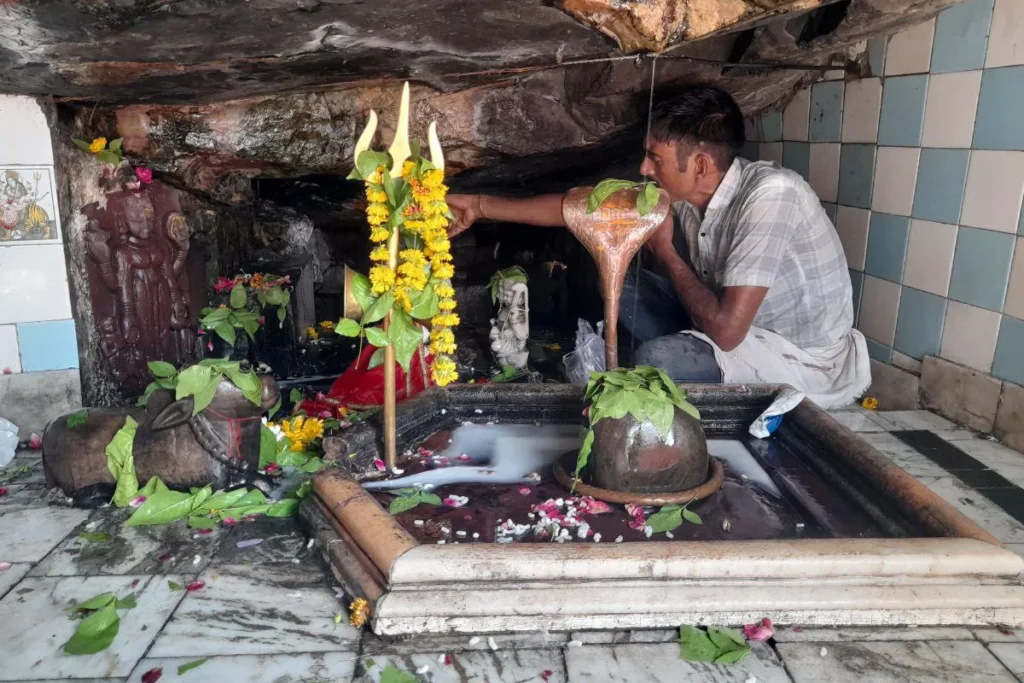
Spiritual Atmosphere
One of the most striking aspects of the Ambareshwar Mahadev Temple is its spiritual ambiance. The temple is nestled in a tranquil setting, away from the chaos of modern urban life. The sound of bells, the chanting of mantras, and the fragrance of incense create an environment that soothes the mind and uplifts the spirit.
Visitors often describe the feeling of peace that envelops them as they step into the temple premises. For devotees, it is a space to connect with the divine and seek inner balance. For travelers, it is a reminder of the deep spiritual traditions that have shaped India for centuries.
Festivals and Celebrations
Festivals at Ambareshwar Mahadev Temple are vibrant and deeply rooted in devotion.
- Maha Shivaratri – This is the grandest festival celebrated at the temple. Devotees fast, sing hymns, and offer special prayers throughout the night. The temple is decorated with flowers and lights, creating a magical atmosphere.
- Shravan Month – Each Monday of Shravan is considered sacred for Lord Shiva. Devotees carry holy water to pour over the lingam, and the temple becomes a hub of religious activities.
- Navratri and Diwali – Although these festivals are primarily associated with other deities, the temple witnesses celebrations with lamps, decorations, and special prayers.
These events transform the temple into a lively center of faith, where cultural traditions blend seamlessly with religious practices.
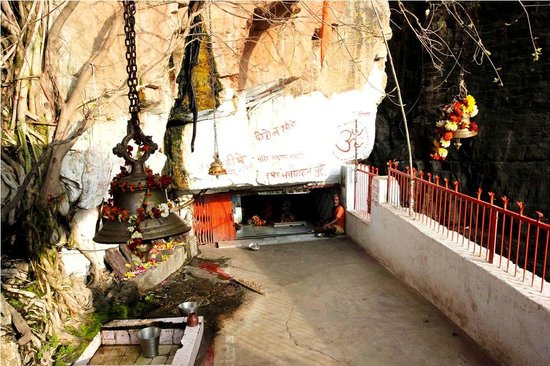
Things to Do When Visiting Ambareshwar Mahadev Temple
A visit to the temple is more than just a religious act. It is a holistic experience that combines spirituality, culture, and exploration.
- Offer Prayers and Rituals – Participate in daily aarti (rituals with light and chants) and seek blessings from Lord Shiva.
- Meditation and Reflection – The temple provides a quiet environment perfect for meditation and self-reflection.
- Explore the Architecture – Admire the carvings, sculptures, and detailed artistry that reflect Rajasthan’s cultural heritage.
- Engage with Local Culture – Interact with priests and locals to learn about the legends and traditions associated with the temple.
- Photography – While maintaining respect for the sanctity of the place, the temple offers opportunities for capturing its beauty and cultural richness.
Nearby Exploration
Visiting the Ambareshwar Mahadev Temple is not only a spiritual journey but also an opportunity to immerse yourself in the diverse culture and history of Rajasthan. The temple is located in the Rajsamand district, a region that holds immense cultural wealth and is surrounded by natural beauty, architectural wonders, and timeless traditions. A traveler who comes here with an open heart will find that the temple is only the beginning of a deeper experience.
Rajsamand Lake
One of the closest and most fascinating sites near the Ambareshwar Mahadev Temple is the Rajsamand Lake. Constructed in the seventeenth century under the patronage of Maharana Raj Singh, this man-made marvel is more than just a body of water. It served as a crucial reservoir that provided relief during times of drought and continues to reflect the wisdom and vision of Rajasthan’s rulers. Standing on the marble embankments of the lake, one can see inscriptions that record the history and achievements of the Mewar dynasty. These engravings are not merely decorative; they are historical documents etched in stone, narrating stories of battles, conquests, and devotion.
The beauty of Rajsamand Lake is timeless. At sunrise, its waters shimmer with hues of gold, while at sunset, the lake mirrors the crimson sky, creating a serene atmosphere for visitors. Couples often walk along its banks, enjoying the calmness of the environment, while families gather to admire its vastness. For those interested in photography, the lake provides endless opportunities to capture reflections of the Aravalli Hills in the still waters.

Kumbhalgarh Fort
A little further from the temple lies the grand Kumbhalgarh Fort, one of the most celebrated monuments of Rajasthan. Recognized as a UNESCO World Heritage Site, the fort is renowned for its massive walls, which stretch for thirty six kilometers, making it the second longest continuous wall in the world after the Great Wall of China. The fort was built by Maharana Kumbha in the fifteenth century and became a stronghold of the Mewar kingdom.
Kumbhalgarh Fort is not only an architectural wonder but also a place of deep historical significance. It is famously known as the birthplace of Maharana Pratap, the legendary Rajput warrior who resisted the Mughal empire with courage and valor. As you step into the fort, the air itself seems to echo the tales of battles fought and victories earned. The gates, palaces, temples, and stepwells within the fort showcase the brilliance of Rajput engineering and artistry.
Visitors often find themselves lost in its labyrinth of courtyards and halls. The fort also has over three hundred temples, both Hindu and Jain, that reflect the religious tolerance and cultural diversity of the region. Climbing up to the highest point of the fort offers panoramic views of the surrounding forests and hills. During the evenings, the fort is beautifully illuminated, and the sight of its golden glow under the starlit sky is unforgettable.
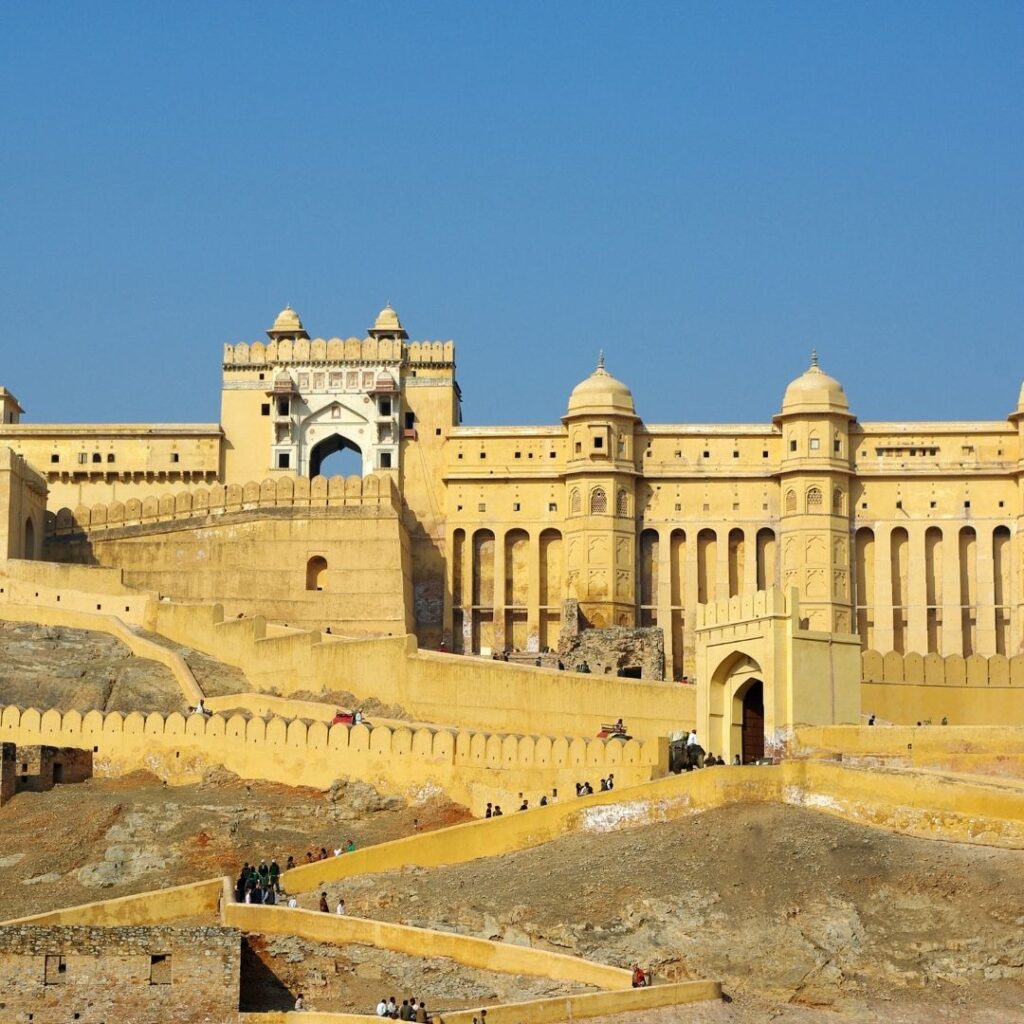
Nathdwara
Another nearby attraction is the town of Nathdwara, located along the banks of the Banas River. Nathdwara is best known for the Shrinathji Temple, which houses an idol of Lord Krishna in the form of a young child lifting the Govardhan hill. This temple is one of the most significant centers of Krishna worship in India and is visited by thousands of devotees throughout the year.
The lanes of Nathdwara are full of life and culture. They are lined with shops selling traditional handicrafts, paintings, and sweets. The town is particularly famous for Pichwai paintings, intricate works of art that depict stories from the life of Lord Krishna. Walking through the town, one feels immersed in devotion and artistry. Festivals such as Janmashtami and Holi transform Nathdwara into a vibrant hub of colors, music, and joy.
For a traveler visiting Ambareshwar Mahadev Temple, combining the trip with Nathdwara provides a balanced experience of both Shaivism and Vaishnavism, two of the most important traditions in Hinduism.
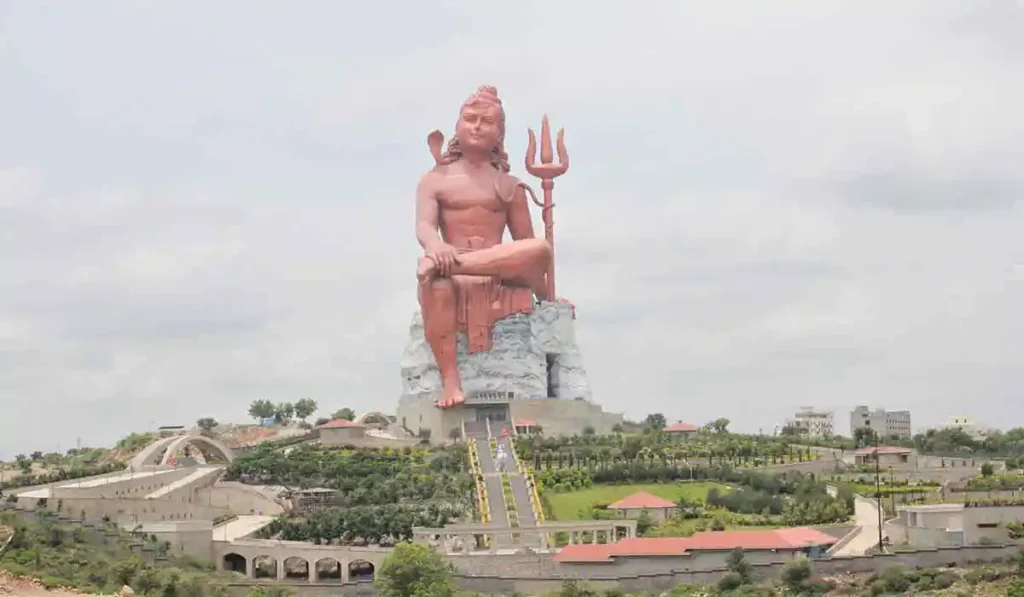
Udaipur
When speaking of nearby explorations, it is impossible not to mention Udaipur, often called the City of Lakes. Located a short distance away, Udaipur is one of the most romantic and historically rich cities in India. The shimmering waters of Lake Pichola, the grandeur of the City Palace, and the charm of the Jag Mandir and Jagdish Temple make Udaipur a destination that complements the spiritual atmosphere of Ambareshwar Mahadev Temple.
The City Palace, perched on the banks of Lake Pichola, is a magnificent example of Rajput and Mughal architecture blending seamlessly. It houses museums, courtyards, balconies, and gardens that reflect the opulence of the Mewar rulers. From the palace terraces, the views of the lake and surrounding hills are breathtaking.
A boat ride on Lake Pichola during sunset is another experience that leaves visitors spellbound. The reflections of palaces, ghats, and temples on the water create a dreamlike scene. Udaipur also offers vibrant markets where travelers can shop for jewelry, textiles, and handicrafts, all of which carry the essence of Rajasthan’s cultural heritage.
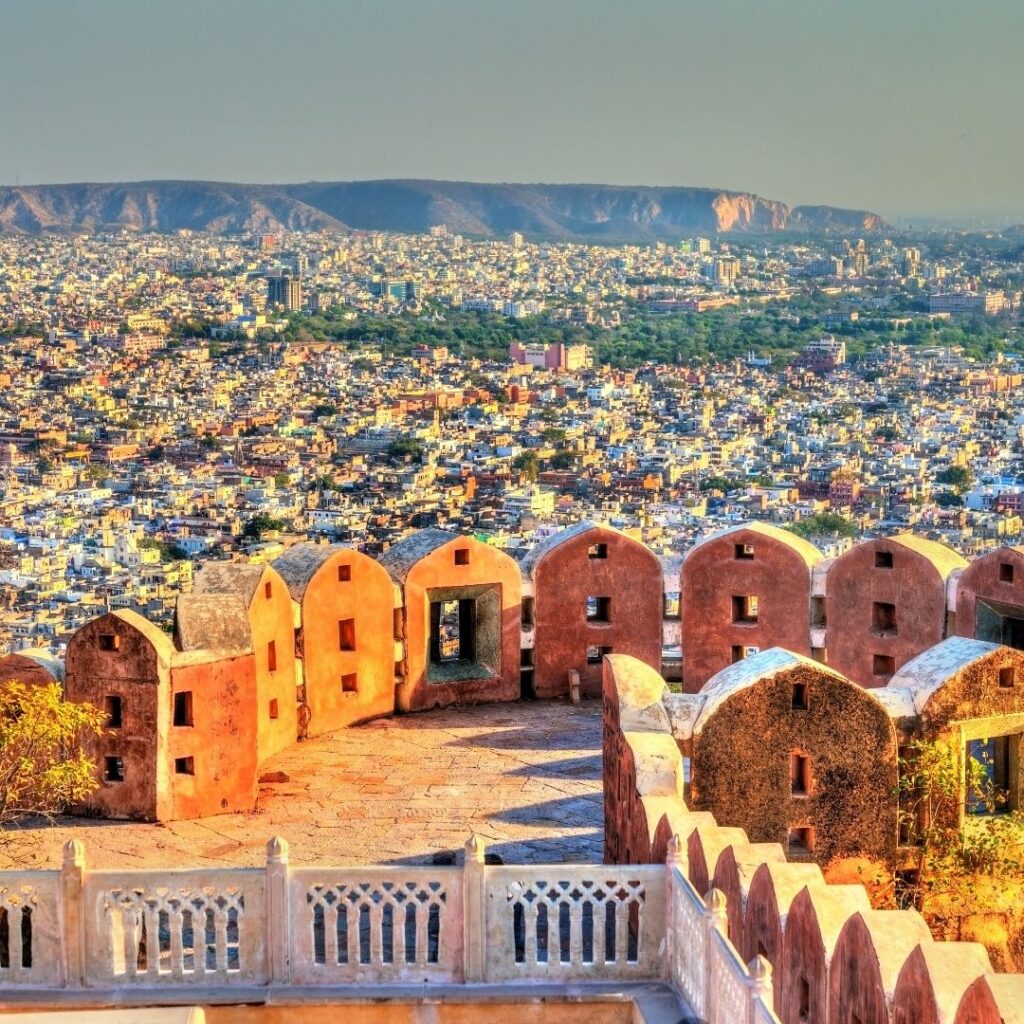
Haldi Ghati
History enthusiasts will find the battlefield of Haldi Ghati an inspiring destination. Located not too far from Rajsamand, this historic site was the scene of the famous battle between Maharana Pratap and the Mughal forces led by Raja Man Singh in 1576. The soil of Haldi Ghati is known for its distinct yellow hue, which gives the valley its name.
Walking through Haldi Ghati, one cannot help but recall the tales of valor and sacrifice associated with Maharana Pratap and his loyal horse, Chetak. Monuments and museums in the area narrate the story of this battle, making it a place of pride for Rajputs and Indians in general. Visitors leave Haldi Ghati not only with knowledge of history but also with admiration for the spirit of freedom and resistance that it symbolizes.
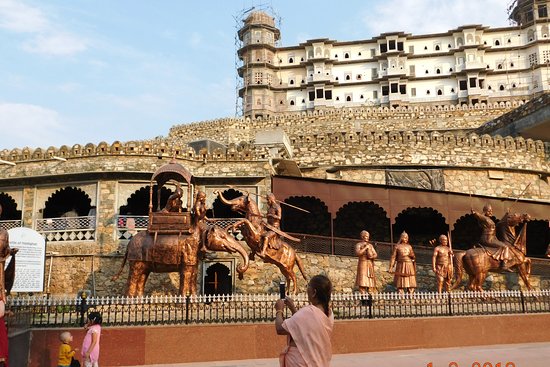
How to Reach Ambareshwar Mahadev Temple
Reaching the Ambareshwar Mahadev Temple in Rajasthan is not just a matter of transport; it is a journey that blends convenience with scenic beauty. Nestled in the Rajsamand district, the temple is surrounded by hills, lakes, and historical sites, making the approach as memorable as the destination itself. Travelers planning their visit can choose from multiple routes and modes of travel depending on their starting point, budget, and preference for comfort or adventure.
By Air
The nearest airport to Ambareshwar Mahadev Temple is Maharana Pratap Airport in Udaipur, located around 65 kilometers away. This airport is well connected to major Indian cities such as Delhi, Mumbai, Jaipur, and Bangalore through daily flights operated by both full-service and low-cost airlines. International travelers can either fly into Delhi or Mumbai and then take a connecting flight to Udaipur.
From Udaipur Airport, travelers can hire private taxis or opt for app-based cab services to reach Rajsamand. The drive takes about one and a half hours, passing through scenic stretches of the Aravalli hills and small towns along the way. For those seeking a more budget-friendly option, shared cabs and state-run buses are also available from Udaipur city to Rajsamand.
By Train
For train travelers, the nearest major railway station is Udaipur City Railway Station. Udaipur is well connected to cities such as Delhi, Jaipur, Ahmedabad, and Mumbai through regular express and superfast trains. Another convenient option is Falna Railway Station, about 80 kilometers away, which is an important stop on the Delhi–Ahmedabad line.
Upon arrival at either station, visitors can hire local taxis, take private cars, or use state transport buses to continue their journey. Train journeys in Rajasthan are comfortable, and many travelers prefer them for their affordability and the chance to enjoy the changing landscapes of rural India. For honeymooners or families seeking a relaxed trip, first-class or AC coaches provide a more comfortable ride.
By Road
The road network in Rajasthan is extensive, and Rajsamand is well connected by highways. National Highway 58 passes through the district, linking it with Udaipur, Nathdwara, and Ajmer. Travelers driving from Udaipur can reach the temple in about 90 minutes, while those starting from Jaipur will take roughly six hours.
State transport buses run by Rajasthan State Road Transport Corporation (RSRTC) provide regular services from Jaipur, Udaipur, Ajmer, and Jodhpur to Rajsamand. For those who prefer more flexibility, private Volvo buses and tour operators also run services connecting the district with nearby cities.
Hiring a private cab or self-driving offers the most convenient option, especially for families or groups. The roads are generally well maintained, and the journey offers glimpses of Rajasthan’s countryside, dotted with farms, hills, and traditional villages. Travelers often find that the drive itself becomes part of the overall experience.
Local Transport
Once in Rajsamand town, reaching the temple is relatively simple. Auto rickshaws and cycle rickshaws are available for short distances. For a more comfortable ride, taxis can be hired for half-day or full-day tours, which also allow visitors to combine their temple visit with nearby attractions like Rajsamand Lake or Nathdwara.
For those who enjoy walking, the narrow lanes and village pathways leading up to the temple add an authentic charm to the visit. Many pilgrims prefer to walk the last stretch as a form of devotion, especially during festivals.
Best Routes for International Visitors
International travelers arriving in India often land in Delhi or Mumbai. From Delhi, one can either take a direct flight to Udaipur or enjoy a scenic overnight train journey to Udaipur or Falna. From Mumbai, direct flights to Udaipur are the quickest option, although some travelers enjoy combining their temple visit with a longer road trip through Gujarat and Rajasthan.
Tips for a Smooth Journey
- Book your flights and trains in advance during peak pilgrimage seasons or festivals.
- Carry cash for small local rides, as digital payments may not always work in rural areas.
- If traveling by road, keep water and snacks handy since the highways, though well maintained, may have long stretches without facilities.
- For those traveling in summer, plan early morning or late evening road journeys to avoid the heat.
Accommodation Options
For those wishing to stay near the temple, options range from budget lodges to mid-range hotels in Rajsamand town. For a more luxurious experience, Udaipur offers heritage hotels and resorts that combine comfort with cultural charm.
Is Ambareshwar Mahadev Temple Comfortable for Visitors?
Yes, the temple is quite accessible and visitor-friendly. Facilities for pilgrims are maintained by the local temple trust. The atmosphere is welcoming, and the local community is known for its hospitality. While summers in Rajasthan can be hot, mornings and evenings provide pleasant conditions for a temple visit. Winters are the best time to explore, as the climate is comfortable for both darshan and nearby sightseeing.
FAQs
Q1. Where is Ambareshwar Mahadev Temple located?
It is located near Udaipur in Rajasthan, surrounded by scenic hills and greenery.
Q2. Which deity is worshipped here?
The temple is dedicated to Lord Shiva, worshipped as Ambareshwar Mahadev.
Q3. Why is the temple significant?
It is an ancient shrine believed to be a powerful place of blessings for health, peace, and prosperity.
Q4. What is special about its setting?
The temple is nestled in a serene natural environment, attracting both devotees and nature lovers.
Q5. What is the architecture like?
It showcases traditional Rajasthani temple style with a stone sanctum and simple yet divine charm.
Q6. What are the temple timings?
The temple is generally open from early morning to evening for darshan and rituals.
Q7. Are any festivals celebrated here?
Yes, Maha Shivaratri and Shravan month see large gatherings and special pujas.
Q8. How can one reach the temple?
It is accessible by road from Udaipur city, with local transport and taxis available.
Q9. Is there any entry fee?
No, the temple is free to enter for all visitors.
Q10. What is the best time to visit?
October to March is ideal due to pleasant weather, while Shravan month is spiritually significant.

